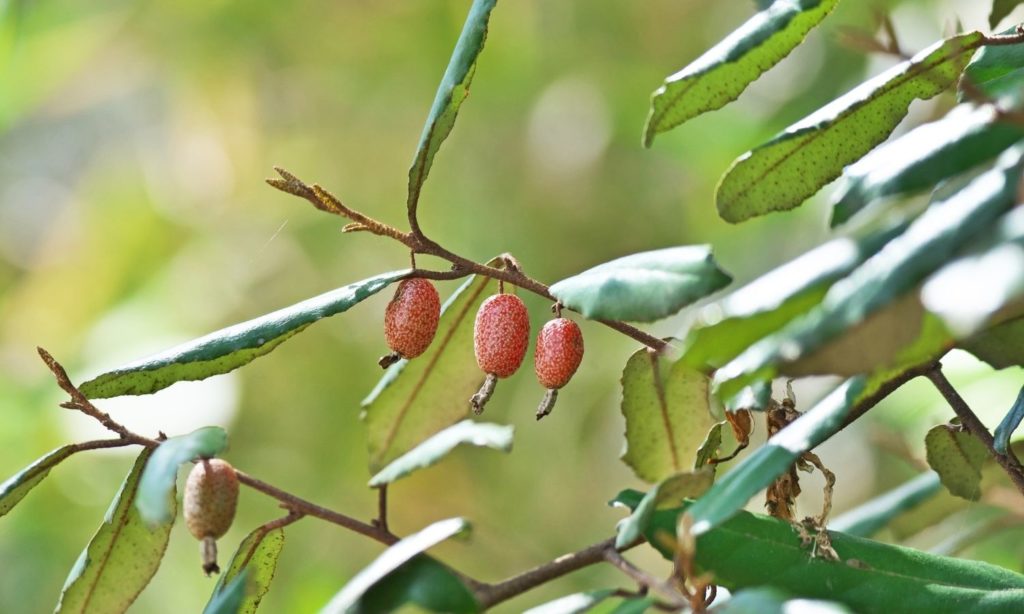If you live in or around Atlanta, you have certainly met this shrub-turned-wild, easily identified by the silver underside of her leaf, where she gets her name, Silverthorn. Elaeagnus pungens is a tricky mistress, often planted for her evergreen shrubiness. Still, if left unchecked, she quickly shapeshifts into a vine, climbing trees and spreading her tasty little seeds every which way with the birds. What was an innocent privacy hedge rapidly colonizes your forest.

But, in the spirit of turning the challenge into an opportunity, she lacks ecological pressure in her new home as with any aggressive species. Enter hungry human: harvesting the delicious winter-fruiting tart little berry helps keep her from spreading by seed and packs a rich vitamin-C punch in mid-winter. My favorite way to eat this wild, foraged, prolific fruit is by processing it into fruit leather.


HERE’S HOW:
STEP 1 – CORRECTLY IDENTIFY THE PLANT AND BERRY
Like autumn olive, this Elaeagnus has a silver underleaf and speckled red/orange fruit. Before harvesting, make sure you have correctly identified the plant by consulting a field guide or asking someone who knows. Once you do that, proceed.
STEP 2 – HARVEST THE BERRIES
They are best when they have turned from silver/green to red/orange and are soft.

STEP 3 – REMOVE THE SEEDS AND MASH
I like to do this by running the berries through a baby-food mill, which separates the fruit’s seeds and mashes the fruit. If you don’t have a baby-food mill, you could manually mash them and remove the seeds.
STEP 4 – SWEETEN TO TASTE
Depending on how ripe the berries were, they can be a bit tart. I like to add honey or maple syrup into the mash to personal taste.
STEP 5 – DEHYDRATE
In a dehydrator, lay a thin layer of the mash on parchment paper. Dehydrate on medium until the mix reaches fruit leather consistency.
STEP 6 – ENJOY!
Now you have a simple and delicious snack!
